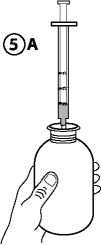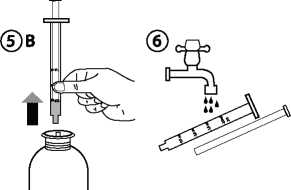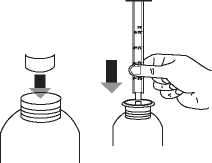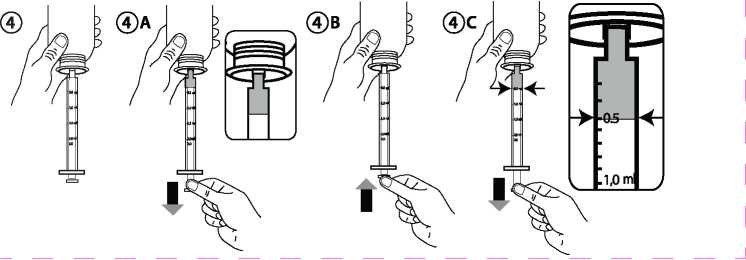Methotrexate 2Mg/Ml Oral Solution
Uncommon: affects 1 to 10 users in 1,000
■ reduced resistance to infection
■ tumours in the lymph nodes, this may be more noticeable under your armpit or in your groin.
■ low levels of white and red blood cells
■ drowsiness
■ nose bleeds
■ kidney problems
■ irritation or swelling of the vaginal tissues
Rare: affects 1 to 10 users in 10,000
■ chickenpox (herpes zoster)
■ production of very large red blood cells which leads to tiredness, muscle weakness, weight loss, feeling sick, fast heart beat and tingling or numbness in the hands and feet
■ increased risk of diabetes
■ feeling depressed or confused
■ weakness and loss of movement, sometimes on one side of the body.
■ fits
■ high blood pressure, blood clots that can lead to strokes, breathlessness
■ swelling at the back of the throat, swollen and bleeding gums, swollen tongue, ulcers and bleeding in the digestive tract, inflamed pancreas
■ fatty liver, cirrhosis of the liver, and serious liver disorders.
■ breakdown of the kidney tissue which may show as back pain
■ skin sensitivity to light, acne, faking inflamed skin, changes in skin colour, red or purple spots on the skin, skin lesions, skin ulcers and breakdown of inflamed areas in patients with psoriasis, discolouration of the nails
■ increase in lumps under the skin that are caused in Rheumatoid Arthritis
■ loss of interest in or inability to have sex, problems with your periods
Very rare: affects less than 1 user in 10,000
■ herpes simples (cold sores), hepatitis
■ an immune disorder that reduces antibodies that fight infection. Symptoms include pain, unable to sleep, tiredness and feeling depressed and anxious.
■ joint and muscle pain, tingling or numbness in the fingers and toes
■ mixing words up when speaking and impaired thinking, loss of contact with reality (psychosis), tingly sensations in the head, pain in the head caused by swelling, ringing in the ears
■ change in mood
■ conjunctivitis, blurred vision
■ dry cough, pneumonia
■ swollen pancreas, black or tarry stools
■ thread veins in the skin, boils, bruising, nail infection and detachment of the nail.
■ weakening or softening of the bones
■ pain or difficulty passing urine or increased need to pass urine, blood in the urine, cystitis
■ reduced ability to become pregnant or for a man to father children
■ vaginal bleeding, swelling of the breasts, particularly in men
Not known:
■ wide spread cold sores and infections
■ haemorrhages and bleeding problems
■ impaired vision.
If any of the side effects gets serious, or if you notice any side effects not listed in this leaflet, please tell your doctor or pharmacist.
Reporting of side effects
If you get any side effects, talk to your doctor, pharmacist or nurse. This includes any possible side effects not listed in this leaflet. You can also report side effects directly via the national reporting system listed below. By reporting side effects you can help provide more information on the safety of this medicine.
United Kingdom
Yellow Card Scheme
Website: www.mhra.gov.uk/yellowcard
Ireland
HPRA Pharmacovigilance Earlsfort Terrace, IRL - Dublin 2 Tel: +353 1 6764971 Fax: +353 1 6762517 Website: www.hpra.ie e-mail: medsafety@hpra.ie
RoEBEmont*^ Package leaflet: Information for the user


Methotrexate for the treatment of psoriasis and rheumatoid arthritis should only be administered 1x/week. Methotrexate administered for the treatment of oncological diseases should be administered cautiously taking into account the body surface area.
Please note that this oral solution contains 2mg methotrexate in 1ml solution and that the scaling of the dosing syringe is in ml and not mg.
Incorrect dosing of methotrexate can result in serious potentially fatal adverse drug reactions.

Read all of this leaflet carefully before you start taking this medicine - because it contains important information for you.
■ Keep this leaflet. You may need to read it again.
■ If you have any further questions, ask your doctor, pharmacist or nurse.
■ This medicine has been prescribed for you only. Do not pass it on to others. It may harm them, even if their signs of illness are the same as yours.
■ If you get any side effects, talk to your doctor, pharmacist or nurse. This includes any possible side effects not listed in this leaflet. See section 4.
What is in this leaflet:
1. What Methotrexate Oral Solution is and what it is used for
2. What you need to know before you take Methotrexate Oral Solution
3. How to take Methotrexate Oral Solution
4. Possible side effects
5. How to store Methotrexate Oral Solution
6. Contents of the pack and other information
The full name of your medicine is Methotrexate 2mg/ml Oral Solution. In this leaflet the shorter name methotrexate is used.
Methotrexate belongs to a group of medicines called 'cytotoxics' which are most commonly used to kill cells and tumours. It is also known as an immunosuppressant which affects the reproduction of the body's cells and reduces the activity of the immune system.
Methotrexate can be given alone or in combination to treat:
■ Severe active rheumatoid arthritis.
■ Acute Lymphocytic Leukaemia (ALL) in children and adults
■ Malignant trophoblastic tumours
■ Severe psoriasis. It is usually used for patients who have tried other treatments but their condition has not improved.
You should consult your doctor if you are unsure why you have been given Methotrexate 2mg/ml Oral Solution.
■ Keep this medicine out of the sight and reach of children.
■ Do not store above 25°C. Do not refrigerate. Store in the original carton in order to protect from light.
■ Do not use 28 days after you first open it. Take it back to the pharmacy.
■ Do not use this medicine after the expiry date (month, year) which is stated on the label after EXP. The expiry date refers to the last day of that month.
■ Do not use methotrexate if you notice anything wrong with the medicine. Talk to your doctor or pharmacist.
■ Any unused medicine should be disposed of in accordance with local requirements for cytotoxics.
■ Do not throw away any medicines via wastewater or household waste. Ask your pharmacist how to throw away medicines you no longer use. These measures will help to protect the environment.
What Methotrexate Oral Solution contains
■ The active substance is methotrexate disodium. Each ml of oral solution contains 2mg of methotrexate.
■ The other ingredients are sodium methyl parahydroxybenzoate (E219), sodium ethyl parahydroxybenzoate (E215), di-sodium hydrogen phosphate dihydrate, citric acid monohydrate (E330), sucralose (E955), raspberry favour (containing propylene glycol and sulphites) and purified water.
What Methotrexate Oral Solution and contents of the pack
Methotrexate is a clear yellow solution. It comes in a brown glass bottle holding 35ml or 65ml of solution with a 10 ml syringe and bottle adaptor.
The Marketing Authorisation Holder and Manufacturer is
Rosemont Pharmaceuticals Ltd, Yorkdale Industrial Park, Braithwaite Street, Leeds, LS11 9XE, UK.
Tel: + 44 (0) 113 244 1400
This medicinal product is authorised in the Member States of the EEA under the following names:
UK and Ireland Methotrexate 2mg/ml Oral Solution
Germany Methotrexat Rosemont 2mg/ml Losung zum Einnehmen
I
Do not take methotrexate if :
■ you are allergic to methotrexate or any of the other ingredients of this medicine (listed in section 6). The signs of an allergic reaction may include swelling of your face, lips, tongue or throat, difficulty breathing or swallowing, severe itching of your skin with raised lumps
■ you have severe kidney problems, including conditions requiring kidney dialysis.
■ you have severe liver problems
■ you suffer from alcoholism
■ you have an active infectious disease (e.g. fever, chills, joint pain)
■ you have a medical condition or are receiving medication which lowers your resistance to infection.
■ you have any serious blood problems including bone marrow disorders, serious anaemia and clotting problems.
■ swelling of the mouth or ulcers in the digestive tract.
■ you are pregnant, trying to become pregnant or breast-feeding (see section 2 'Pregnancy,
L breast-feeding and fertility')
you have been given or are going to be given a live vaccine.
Do not take this medicine if any of the above apply to you. If you are not sure, talk to your doctor or pharmacist before taking methotrexate.
Warnings and precautions
LTalk to your doctor, pharmacist or nurse before taking methotrexate if: you have any kidney, lung or liver problems ■ you have diabetes
■ you have any blood disorders or anaemia
■ you have diarrhoea or have been vomiting as you may be dehydrated which can affect how you react to methotrexate
■ you have gastro-intestinal (digestive) problems
■ you have or have ever suffered from mental illness
■ you have received or you are receiving radiotherapy (x-ray treatment)
■ you have received any vaccinations recently or you are due to have any, as methotrexate can reduce their effect
■ you have any symptoms or signs of infection
■ you have excess fluid, between the lungs and chest wall or abdominal swelling (ascites)
■ you have herpes zoster (chicken pox), tuberculosis (TB) or hepatitis B or C.
You must avoid excessive exposure to sunlight and tanning beds.
If any of the above apply to you (or you are not sure), talk to your doctor or pharmacist before taking methotrexate.
Regular check-ups
During your treatment, you will have a number of tests, such as regular blood tests to check that appropriate blood levels of methotrexate are attained and that your kidneys are eliminating excess drug properly.
Other tests are performed routinely at the start and during the course of therapy (e.g. chest X-ray, liver function test, full blood count, mouth checks for ulcers, urinalysis and a physical check for swelling of your lymph nodes (glands in your neck, armpits and groin). Any unusual swellings should be reported to your doctor.

Rosemont Pharmaceuticals Ltd. Printed Packaging Origination and Approval
|
Product: |
Methotrexate 2mg/ml Oral Solution |
Date: |
17.06.15 | ||
|
Strength: |
2mg/ml |
Proof Number: |
SIX | ||
|
New Item Code: |
P0799 |
Page: |
1 of 2 | ||
|
Previous Item Code: |
N/A |
New Pharmacode: |
llllllll | ||
|
Design Icon: |
- |
Sugar-Free: |
YES |
270 | |
|
Cutter Ref: |
- |
Pack Size |
Various |
Barcode: | |
|
Dimensions: |
400 x 300mm (folded 150 x 37mm) | ||||
|
Number of Colours: |
1 ■ Black |
1 1 Keyline | |||
Name:
Signature:
Name:
Signature:
If you are having long term treatment, the doctor may send you to the hospital for a liver biopsy.
Other medicines and Methotrexate
Tell your doctor or pharmacist if you are taking, have recently taken or might take any other medicines. This includes medicines obtained without a prescription and herbal medicines. This is because methotrexate can affect the way some other medicines work. Also, some other medicines can affect the way methotrexate works.
In particular tell your doctor or pharmacist if you are taking any of the following:
■ vaccinations
■ medicines for pain or inflammation such as aspirin, ibuprofen, indometacin, amidopyrine phenylbutazone
Continued overleaf
□ I-1
NO |_| applicable
Artwork produced by:

■ medicines used to treat bacterial infections (antibiotics) such as chloramphenicol, penicillin, sulphonamides, co-trimoxazole, trimethoprim and tetracyclines
■ diuretics, that reduce fluid retention such as bendroflumethiazide or triamterene
■ medicines for lowering blood sugar levels such as metformin
■ p-aminobenzoic acid and acitretin, used to treat psoriasis or skin disorders
■ medicines used to treat epilepsy such as diphenylhydantoins (phenytoin) and barbiturates such as phenobarbital
■ medicines used to treat gout such as probenecid and sulfinpyrazone
■ vitamin preparations containing folic acid or similar products
■ nitrous oxide (a gas used in general anaesthesia)
■ medicines that help you sleep (tranquillisers)
■ medicines to treat cancer such as doxorubicin, 5-fluorouracil, cisplatin, l-asparaginase or procarbazine
■ pyrimethamine, used to treat malaria
■ ieflunomide, used to treat rheumatoid arthritis
■ medicines used to suppress the immune system such as azathioprine, mercaptopurine and ciclosporin
■ omeprazole, used to treat excess stomach acid
■ theophylline, used to treat lung problems such as asthma and COPD
■ cholestryamine, used to lower cholesterol levels.
If any of the above apply to you (or you are not sure), talk to your doctor or pharmacist before taking Methotrexate
Taking Methotrexate Oral Solution with food, drink and alcohol
Alcohol should be avoided while receiving methotrexate.
Methotrexate can be taken with or without food.
When you have taken your dose, drink some water and swallow it to ensure you have taken your full dose and there is no methotrexate left in your mouth.
Pregnancy, breast-feeding and fertility
Pregnancy
■ Do not take methotrexate if you think you might be pregnant, or are planning to get pregnant or breast-feeding. Methotrexate can cause birth defects, harm unborn babies or cause miscarriages and so it is very important that it is not given to pregnant patients or patients planning to become pregnant.
■ You must avoid becoming pregnant whilst taking methotrexate and for at least 6 months after treatment is stopped. Therefore you must ensure reliable contraception is used during this whole period.
■ Before starting treatment, your doctor or nurse should perform a pregnancy test.
■ For those who are taking methotrexate for oncology treatment and wish to become pregnant, you must discuss this with your doctor first.
Breast-feeding
Methotrexate is excreted in human milk. Because of the potential for serious adverse reactions in infants, breast-feeding must be discontinued before starting treatment.
Fertility
■ It may affect women's periods; they may become less frequent or stop completely.
■ Methotrexate can affect sperm and egg production with the potential to cause birth defects.
Driving and using machines
Do not drive, cycle or use any tools or machines until you know how this medicine affects you. This is because you may feel drowsy, you may have a loss of co-ordination and you may get blurred vision.
If you are in doubt about whether you can do a particular activity, talk to your doctor or pharmacist.
Methotrexate contains sodium methyl parahydroxybenzoate, sodium ethyl parahydroxybenzoate, sodium and sulphites
■ Sodium methyl and ethyl parahydroxybenzoates - these may cause an allergic reaction which may happen some time after starting the medicine
■ Sodium (0.72mg in 1ml dose) - if you are on a low sodium diet, you need to take this into account
■ Sulphites (from the favour) - these may rarely cause a severe allergic reaction and difficulty breathing.
■
■■
■■
Turn the bottle the right way up (Figure 5A).
Remove the syringe from the adaptor (Figure 5B).
Put the end of the syringe into your mouth and push the plunger slowly back in to take the medicine. Close the bottle with the plastic screw cap - leave the syringe adaptor in the bottle.
Wash the syringe with warm 'soapy' water and rinse well. Hold the syringe under water and move the plunger up and down several times to make sure the inside of the syringe is clean. Let the syringe dry completely before you use that syringe again for dosing. Store the syringe in a hygienic place with the medicine (Figure 6)


WASH YOUR HANDS THOROUGHLY with soap and warm water. How much to take
Dosage for rheumatoid arthritis:
Adults
■ The usual dose is 7.5mg to 15mg (3.75 - 7.5ml), once a week on the same day each week.
■ Your doctor may adjust the dose to suit you according to your response to treatment and side effects.
■ If you are elderly, your doctor may give you lower doses.
Always take this medicine exactly as your doctor has told you. Check with your doctor or pharmacist if ou are not sure.
Taking this medicine
■ This medicine contains 2 milligram (mg) of Methotrexate in each 1 millilitre (ml) of solution.
■ Take this medicine by mouth.
■ Patients with rheumatoid arthritis or psoriasis will usually take their medicine orally once a week on the same day each week. Daily administration in non-oncological indications can lead to serious toxic effects.
■ Do not take more medicine more often than your doctor has told you to.
■ Always use the syringe supplied with the pack, or as directed by your doctor, nurse or pharmacist.
■ Methotrexate can be taken with or without food. When you have taken your dose, drink some water and swallow it to ensure you have taken you full dose and there is no methotrexate left in your mouth.
■ If you are a parent or care giver administering the medicine, wash your hands before and after administering a dose. Wipe up spillages immediately. To decrease the risk of exposure disposable gloves should be used when handling methotrexate
■ Women who are pregnant, planning to be or breastfeeding should not handle methotrexate
■ Parents / care givers and patients should be advised to keep methotrexate out of the reach and sight of children, preferably in a locked cupboard. Accidental ingestion can be lethal for children.
■ Keep the bottle tightly closed to protect the integrity of the product and minimise the risk of accidental spillage.
Children:
Not recommended for use in children.
Dosage for psoriasis:
Adults and the Elderly
■ The usual dose is 10mg to 25mg (5ml - 12.5ml), once a week on the same day each week.
■ Your doctor may adjust the dose to suit you according to your response to treatment and side effects.
Children:
Not recommended for use in children.
Dosage for treatment of cancer:
Adults, the Elderly and Children
■ Your doctor should give you a test dose of 5 to10mg by injection one week before starting treatment.
■ The doctor will calculate the dosage required from your body surface area (m2), and the dose is expressed as mg/m2.
■ Methotrexate Oral Solution is usually given as a single dose
- For malignant tumours, the usual dose is 15mg/m2 for 5 days
- For Acute Lymphoblastic Leukaemia the usual dose is 20 - 40mg/m2
■ A rest period of at least two weeks is advised between treatments, to allow recovery from any side effects.
■ Doses in excess of 100mg are usually given by injection by a doctor.
■ Doses of more than 70mg/m2 should not be administered without leucovorin rescue (folinic acid rescue) or blood levels of methotrexate being checked 24 to 48 hours after taking your medicine.
■ These doses may be reduced if you are receiving other medication. Your doctor will decide the correct dose for you, if you want more information you should ask your doctor.
If you take more Methotrexate than you should
■ If you take more methotrexate than you should, talk to your doctor or go to the nearest hospital straight away. Take the medicine pack with you.
■ Taking the wrong dose, resulting in overdose, can sometimes lead to death.
If you forget to take Methotrexate
■ If you forget a dose, skip the missed dose. Then wait until the next dose is due.
■ Do not take a double dose to make up for a forgotten dose.
If you stop taking Methotrexate
Keep taking this medicine until your doctor tells you to stop. Do not stop taking this medicine just because you feel better.
If you have any further questions on the use of this medicine, ask your doctor, pharmacist or nurse.
Measuring your dose
Instructions for use
■ Open the bottle: press the cap and turn it anticlockwise (Figure 1).
■ Separate the syringe adaptor from the syringe and insert the adaptor securely into the bottle neck (Figure 2).
■ Take the syringe and put it in the adaptor opening (Figure 3).


■ Turn the bottle upside down (Figure 4).
■ Fill the syringe with a small amount of solution by pulling the plunger down (Figure 4A). Then push the plunger upward in order to remove any possible bubbles (Figure 4B). Finally, pull the plunger down to the graduation mark corresponding to the quantity in millilitres (ml) prescribed by your doctor. The top fat edge of the plunger should be in line with the graduation mark you are measuring to (Figure 4C).
P0799

Like all medicines, this medicine can cause side effects, although not everybody gets them. The following side effects may happen with this medicine:
Stop taking methotrexate and see a doctor or go to a hospital straight away if you notice the following serious side effect - you may need urgent medical treatment:
■ allergic reaction - the signs may include swelling of your face, lips, tongue or
■ throat, difficulty breathing or swallowing, severe itching of your skin with raised lumps.
■ the first signs of life-threatening complications can be: fever, sore throat, mouth ulcers, flu-like symptoms, severe fatigue, nose bleeds and bruising.
■ serious heart problems where fluid is filling around the heart affecting the heartbeat
■ sepsis, whole body inflammation that can be life-threatening.
Stop taking methotrexate and see a doctor or go to a hospital straight away if you notice the symptoms listed above.
Tell your doctor straight away if you have any of the following side effects:
■ a severe skin rash with blisters and peeling skin, particularly around the mouth, nose, eyes and genitals (Stevens Johnson Syndrome) and a more severe form causing severe skin peeling (Toxic Epidermal Necrolysis). Your doctor will stop your treatment in these cases. This is an uncommon side effect.
■ persistent dry cough, pain or difficulty breathing or becoming breathless as methotrexate can cause inflammation of the lungs. This is an uncommon side effect.
■ skin rash, fever and swollen glands, particularly in the first two months of treatment, as these may be signs of a hypersensitivity reaction.
■ loss of coordination, loss of ability to speak or understand speech, weakness and inability to move one side of the body or the whole body, convulsions or fits.
■ swelling of the hands, ankles or feet, which may be a sign of kidney damage
■ yellowing of the skin and whites of the eye, a sign of liver damage
■ rapid expansion of the large intestines (toxic megacolon). Symptoms may come on suddenly and may include: abdominal pain, bloating of the abdomen, abdominal tenderness, fever, rapid heart rate, shock, bloody diarrhoea. This is a very rare side effect.
The following side-effects have been reported. If any of these cause you problems or if they last for more than one week, you should contact your doctor.
Common: affects 1 to 10 users in 100
■ infections
■ decrease in white blood cell count which increases your risk of infection
■ headache, dizziness and tiredness
■ soreness of the mouth, throat and lips, loss of appetite, feeling sick and vomiting, diarrhoea
■ raised liver enzymes which may show liver problems.
■ mild, red itchy skin rash, hair loss.
Continued overleaf

□ I-1
NO |_| applicable
Rosemont Pharmaceuticals Ltd. Printed Packaging Origination and Approval
|
Product: |
Methotrexate 2mg/ml Oral Solution |
Date: |
17.06.15 | ||
|
Strength: |
2mg/ml |
Proof Number: |
SIX | ||
|
New Item Code: |
P0799 |
Page: |
2 of 2 | ||
|
Previous Item Code: |
N/A |
New Pharmacode: |
llllllll | ||
|
Design Icon: |
- |
Sugar-Free: |
YES |
270 | |
|
Cutter Ref: |
- |
Pack Size |
Various |
Barcode: | |
|
Dimensions: |
400 x 300mm (folded 150 x 37mm) | ||||
|
Number of Colours: |
1 ■ Black |
1 1 Keyline | |||
Name:
Signature:
Name:
Signature:
Date:
Date:
Artwork produced by:
